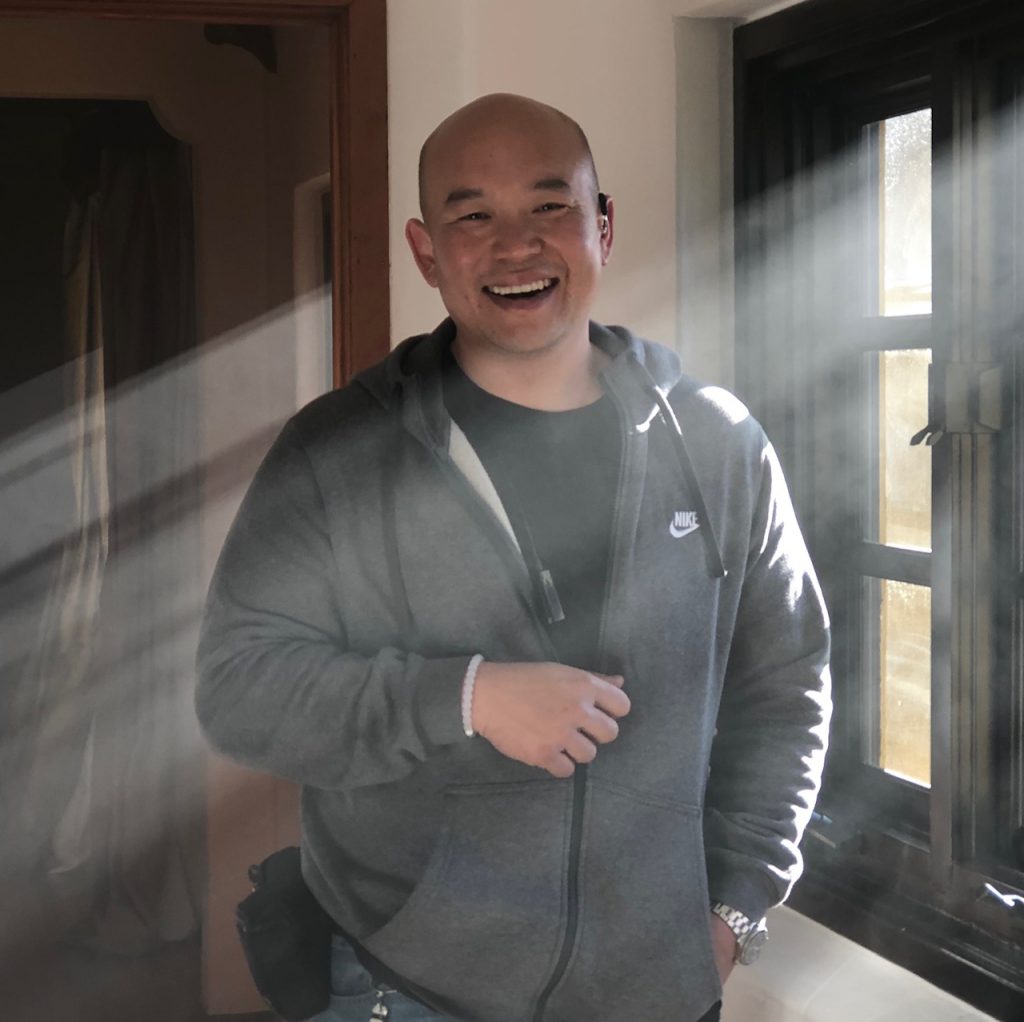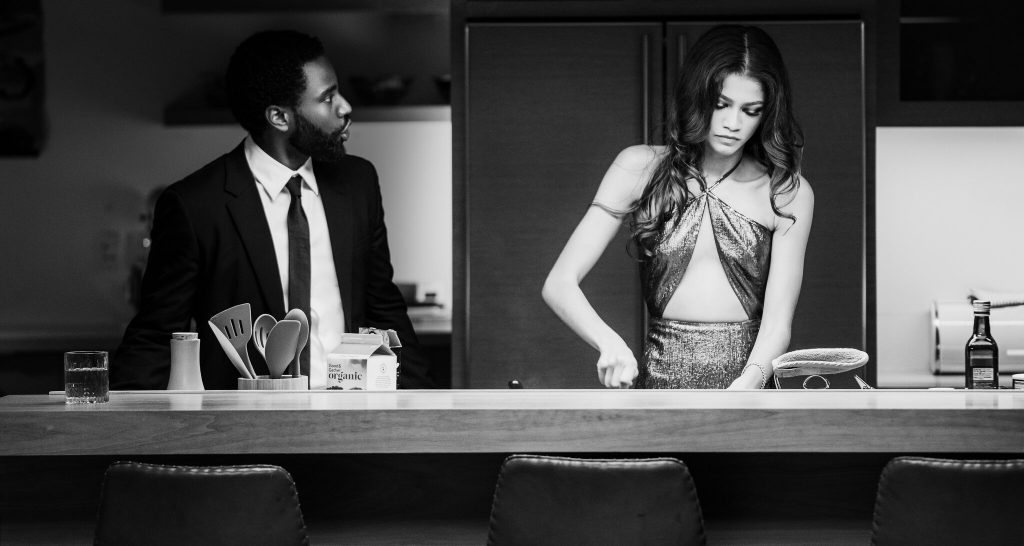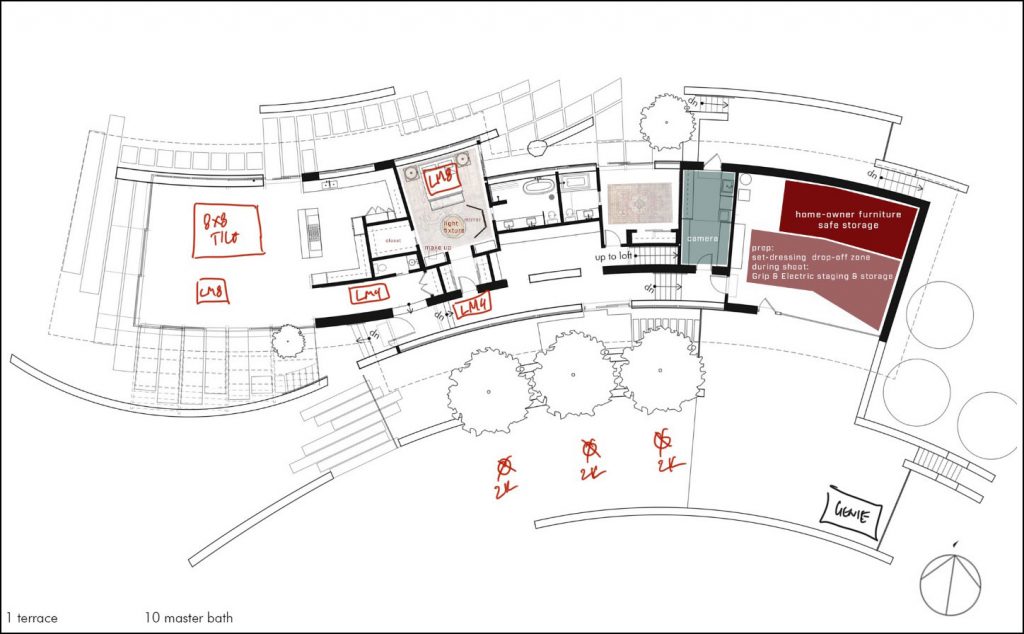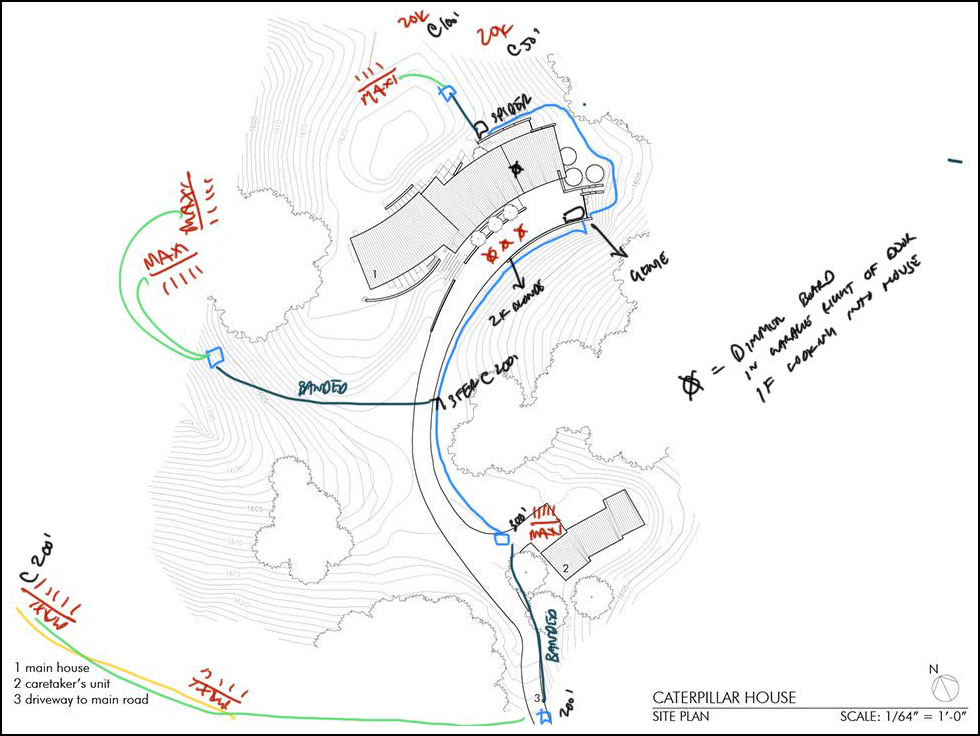We recently caught up with CLT Danny Durr to discuss his journey into the industry as well as his most recent work on Malcolm & Marie. Danny has worked on such projects such as Little Fires Everywhere, Euphoria, and Malcolm & Marie.

When did you become interested in working in film? What made you want to get into the industry?
My interest in working in the film industry began with my love for watching movies. Since I was young going to theaters and even watching movies at home was a big family event. That compounded with my father working in the industry, allowed me additional exposure whether working on set with him or being allowed access to how things were accomplished through magazines like ASC. At the beginning like most, I thought I wanted to direct, but once I started to pick up on certain styles and techniques of filmmakers I became much more interested in cinematography.
The Durr family name is well known throughout the 728 community. Tell us about the family. When did your father, Tim started working in the business?
I’m very grateful for my work ethic and knowledge of the film industry that has been passed down from my dad and has given me a firm foundation. Before getting into 728, he ran a rental house called J&L in the late 80s – early 90s. I grew up there, often getting picked up from school in a cube truck from drivers that worked thereafter they would do runs. I think another thing that I’ve always been drawn to is the comradery amongst a crew. Having that is always an important part of collaborating and having a successfully functioning film set. From running around a rental house to hanging out on set; it allowed me to eventually work on set whenever it didn’t interfere with school.
Tell us about Light Force Rentals. And what it’s like to collaborate with your father, and brother Nick on Light Force.
Light Force was the company name of my dad’s first G&E company. A part of my success was built on dad’s past success and ability to navigate through difficult situations. His insight has allowed me to make decisions to position myself and the business to thrive. Now with my brother, Nick I feel like I’m able to pass on what I’ve learned not only to him but to anyone interested in working in the film industry. I think inspiring the next wave of filmmakers is an important part of my growth and others. I’m always trying to give back as much time and help as I can within my limits. Working with family presents its challenges, but in the end, we always know that we have each other’s best interests in mind.
Growing up I was always inspired by Steven Spielberg films, as cliche, as it might sound his films, spoke to me. Eventually getting work with him as a 728 set lighting technician was a full circle for me and it happened much sooner than I expected in my career. I’m a firm believer in setting goals and challenging yourself constantly so that you keep moving up, never reaching a top. At that point in my career, I was always trying to absorb as much information as possible, constantly taking notes to develop my style when it came to lighting. This eventually led to me being able to work with some of the best DPS and Gaffers in the industry. Much of my understanding of how to operate and run a crew has been taken from what I thought were the best traits of Gaffers like Dave Devlin, Chris Culliton, and Mike Bauman. I’ve been very lucky to work under them and see how they light, operate with production, and collaborate with other filmmakers. Essentially they are my mentors that I’m striving to make my colleagues, their work is the bar that I’m trying to surpass.
What are some of your favorite films or tv shows that have influenced your work?
Creative and original movies that have something to say either emotionally or socially have always influenced me growing up. Empire of the Sun, City of God, Shawshank Redemption, Requiem for a Dream, Cool Hand Luke is a few that pop up in my mind. Trying to tell a story that has a larger meaning is always more fulfilling than just doing a job for a paycheck. Growing up from a generation that was raised on music videos, I also feel like they’ve been a huge influence in some of my work, sometimes you’re forced whether by choice or budget to find creative ways to tell a story. I’ve always preached that the stories of how you get there are just as important as the stories that you are trying to tell.
Malcolm & Marie
The very first call I got was from Marcell and he told me that they wanted to make a small movie, literally me and a couple of LiteMats it was pitched as. With two actors, Sam, and a few other people and that they didn’t want to pay for anything; equipment or manpower, but that we could have ownership in the film. By this point into the lockdown, I looked at it as an opportunity to get back to work and have a creative outlet. Of course, as interest grew, the project grew, and then we were shooting on 35mm film! I knew it was going to be very challenging given how we wanted to approach it but we were still able to find a way where we minimized the number of people. It was almost a return to making a movie for the love of making movies, with friends that helped everyone else do whatever needed to be done to complete the day. Getting to work with a team that has familiarity with each other allows you to put the introduction period of filmmaking aside and truly focus on what is trying to be accomplished, we only had 14 nights of shooting so we had to be as efficient as possible.
This was filmed in the city of Carmel, CA a few months into quarantine. I believe it was the first Hollywood feature to be entirely written, financed, and produced during the COVID-19 pandemic. What was it like working on this film during COVID?
In the beginning, it was a lot of uncertainty because of covid and being away from family, but as protocols were put in place and as we all isolated for 14 days before shooting I felt extremely safe working with the crew in our pod. We were essentially cut off from the outside world, which with testing formed a completely safe environment for us to make the film. Looking back at it, I feel very grateful that I was able to be a part of a film that was pushing me to figure things out. We didn’t only make a beautiful film, we were able to share information to SAG and other production teams as to what we did and what worked, what difficulties we had, and how we could have done things differently.
Interior
What was it like working in the same location throughout the film? And what was it like working with only 2 actors throughout the film?
To me it was very challenging to make this film in one location and only with 2 actors because you have to find different ways to make the location interesting and keep the audience interested in these two actors in essentially real time. Luckily our two leads were uber talented and diverse in their performances. The caterpillar house at which we filmed was also very beautiful architecturally so it very much added to the story telling. Certain parts of the house were very cold and confined, while other parts were very open and grand, lending to what our characters were projecting in their performances.
Can you tell us a little about your lighting scheme for Malcolm & Marie? How would you describe the lighting style?
The caterpillar house had a lot of large open doors and windows, which allowed you to see a lot of the exteriors. Since we were shooting on black and white 35mm film we had to create depth in the deep background so that our talent wouldn’t disappear into limbo. So for the exteriors we used a lot of hard light tungsten, 12 light maxi brutes and 20Ks to rake hillsides or back light ridges. In the interior we use a lot of soft top light, which we were able to utilize tile lites, LiteMats, and rifa lights rigged throughout the house. All of these units were run to a dimmer board to allow us to move efficiently depending on what part of the house we were in and what we saw in the background. At the end of the filming I actually congratulated Marcell, because even though we had some Sky Panels, we never used a single one. They are usually a work horse for us, but I kind of thought it was cool to not use them for once. It was kind of my own personal node to classical filmmaking.
Exterior
The look of the film is such a contrast from Euphoria. What was it like going from a series that was filled with so many vibrant color tones to working on a black and white film?
Going into the project I knew two things were for certain; we were going to need a lot of light and it was going to be very contrasty since we were shooting on Kodak 35mm double-x. In my opinion, Marcell is masterful when it comes to the technical aspect of shooting on film and that makes collaborating with him even easier. I think my strengths are contributing efficiency and making sure I have good taste in having his back when it comes to the imagery. The other thing that was for certain was as long as we stuck to our formula it was going to be impossible to photograph our talent poorly. It’s generally hard to go wrong with large soft sources and beautiful talent, if we make them look good, they will make us look good.
Are there any scenes that you’d like to discuss that stood out from a lighting perspective?
One of my favorite scenes of M&M in the bathroom while Marie is taking a bath. The imagery is so still but the dialogue carries so much weight. We’re filming these two characters in a very intimate moment in close-ups where they have nowhere to hide. One of the advantages to filming in black and white on such a contrasting stock in my opinion is that you can still pour a bunch of light in the frame and you can get away with letting the audience believe it was a night scene. We lit a lot of that with two 12 light maxi brutes bouncing into a 12×20 ultra bounce, diffused with a full grid. Had that been filmed the same way on tungsten color stock there would have been a lot of questions as to why it was so bright for a night scene, but in B/W that pure white gives it a very different feel.
Could you tell us about a show or project you are currently working on?
When I first got into the business there was only shooting on film and as technology has advanced to digital filmmaking as a medium and the lights we use, I feel very fortunate that the team I get to work with still values shooting on film. I’m currently working with Sam and Marcell again on the second season of Euphoria, over a year removed from when we were supposed to shoot it pre-covid. I can’t say too much about what we’re doing but I think the world they are building is in such a different direction from what season one was, hopefully, people will enjoy it as much if not more than the first time around. It’s hard to tell how audiences will respond until the final project is put together, but I can genuinely say that I’m excited with the work we’re doing daily and then even more excited after seeing results with dailies, hopefully, it translates and other people think it’s cool too.
Malcolm & Marie is currently streaming on Netflix.






